Advertisements
Advertisements
प्रश्न
The figure shows the field lines on a positive charge. Is the work done by the field in moving a small positive charge from Q to P positive or negative? Give reason.
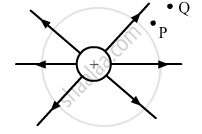
उत्तर
Work done = q.(potential at Q − potential at P), where q is the small positive charge
The electric potential at a point distant r due to the field created by a positive charge Q is given by
\[V = \frac{1}{4 \pi\epsilon_0}\frac{q}{r}\]
\[ \because r_P < r_Q \]
\[ \Rightarrow V_P > V_Q\]
APPEARS IN
संबंधित प्रश्न
Why do the electrostatic field lines not form closed loops?
- An electrostatic field line is a continuous curve. That is, a field line cannot have sudden breaks. Why not?
- Explain why two field lines never cross each other at any point?
Which among the curves shown in the fig. cannot possibly represent electrostatic field lines?
(a)

(b)

(c)
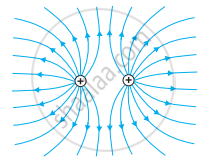
(d)
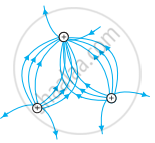
(e)
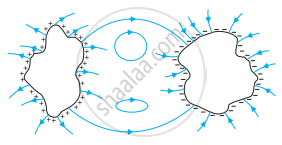
A point charge (+Q) is kept in the vicinity of an uncharged conducting plate. Sketch the electric field lines between the charge and the plate?
Two bar magnets are quickly moved towards a metallic loop connected across a capacitor ‘C’ as shown in the figure. Predict the polarity of the capacitor.

Draw the pattern of electric field lines, when a point charge –Q is kept near an uncharged conducting plate.
A point positive charge is brought near an isolated conducting sphere (figure). The electric field is best given by ______.
Figure shows electric field lines in which an electric dipole P is placed as shown. Which of the following statements is correct?
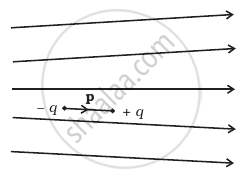
Which of the following figures represent the electric field lines due to a single negative charge?
If Ea be the electric field strength of a short dipole at a point on its axial line and Ee that on the equatorial line at the same distance, then:
